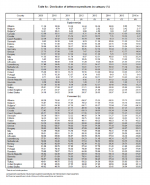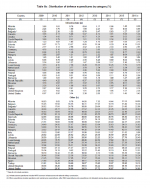Darkening world a challenge for Liberals’ sunny ways
John Ibbitson
The Globe and Mail
09 July 2016
The students in Stéfanie von Hlatky’s classes have no idea of what it’s like to live in a world of great nations in conflict, balance-of-power diplomacy and war that could kill thousands or millions as a constant threat.
“They’re all people who were children when 9/11 happened, and that’s their frame of reference,” Prof. von Hlatky, a political scientist at Queen’s University, observes in an interview.
That’s all changing. As Justin Trudeau and the other NATO heads of government conclude their summit in Warsaw Saturday, they face an old-new reality of Russia and China challenging the West’s supremacy, a challenge not seen since the days of the Prime Minister’s father. Meeting that challenge will test Mr. Trudeau’s sunny assumptions about Canada as a helpful fixer in the world, as the Liberal government struggles to shape a new and coherent policy for the country’s defence.
“History is back,” asserts Andrew Rasiulis, rebutting the 1992 claim by Francis Fukuyama that the end of the Cold War marked, ideologically, the end of history. “But it’s back in a more complex way.”
Mr. Rasiulis is a retired military analyst and fellow at the Canadian Global Affairs Institute. (All of those interviewed for this story are fellows at the institute.) For almost 30 years, he observes, the United States, NATO and other countries of the West have dominated the globe geopolitically, bothered by terrorist threats and sundry insurgencies, but never fundamentally challenged.
But the rising influence and belligerence of China and Russia are confronting Western hegemony in ways not seen since the days of the Soviet Union and Mao Zedong.
“It’s patently the case that we’re back in a situation of great powers competing,” says Julian Lindley-French, a British strategic analyst and vice president of the Atlantic Treaty Association, which studies NATO-related issues. “And it’s interfering with every conflict in the world.”
Russian President Vladimir Putin stunned Western politicians with his annexations in Georgia and Ukraine. To deter further aggression, NATO is bolstering its borders, with the Canadian government detailing at the Warsaw summit it plans to lead a battalion-sized land force in Latvia, part of a new brigade-sized commitment by NATO to Poland and the three Baltic states.
Analysts agree that these reinforcements would be quickly overwhelmed by Russian forces in an invasion. The real purpose of the brigade is to serve as a “tripwire” – a warning to Russia that any moves against the Baltic States or Poland would mean war with the United States, Canada and the rest of NATO.
Strangely enough, the greatest threat to Estonia, Latvia and Lithuania might be found in the Western Pacific. There, China is expanding its navy and turning atolls into airstrips to bolster its claim that the South China Sea is actually a Chinese lake.
Marius Grinius, a retired Canadian diplomat who was ambassador to Vietnam and South and North Korea, points out that Chinese power, wealth and influence have been growing for decades, to the point where “there is now a sense that the Middle Kingdom has to take its place in the world.” Whether it does so peacefully or in conflict with its neighbours and the United States is the most important geopolitical question of our time, what Mr. Grinius calls “the new Great Game.”
The nightmare scenario for Mr. Lindley-French involves rising tensions between China and an overstretched United States in the Pacific, a Middle East in ferment and Europe weak and divided, convincing Mr. Putin that he can get away with snatching territory in the Baltics or somewhere else. And in the background lurks the deadly knowledge that the great powers still have large stockpiles of nuclear weapons.
Add in the continuing threats of terrorism, insurgency, regional instability and the increasing challenge to collective security of global warming, and the world starts to look geopolitically like a collection of dangerous neighbourhoods.
These challenges – both new and old fashioned – confront a Canadian government determined to replace Conservative belligerence with Liberal engagement, peace-making with peacekeeping.
“Trudeau and the Liberals wish that Defence would just go away,” Mr. Rasiulis believes. “Defence is not sunny.” Though Mr. Rasiulis does believe the new government deserves praise for doing a better job than the Conservatives of mixing defence with diplomacy.
The Liberals have already signalled that they have no intention of keeping a commitment by NATO members, made at the last summit in 2014, to gradually raise their defence spending to 2 per cent of GDP, if they are not at that level already. Canadian defence spending is .98 per cent of GDP, one of the lowest levels in NATO.
“The world needs more Canada. NATO needs more Canada,” U.S. President Barack Obama declared during his speech to Parliament in June – a subtle jab at Canada’s tendency, as the saying goes, to give all aid short of help.
The Liberals argue that Canada spends its defence dollars so wisely that big increases aren’t necessary. “We do not feel defensive about our spend[ing],” a senior government official speaking on background told reporters earlier this week at a NATO summit briefing. “The spend[ing] is not the only metric we should be using.”
Prof. von Hlatky believes the government has a point. The Canadian Forces have evolved over the past decade or so into a flexible, superbly trained and reasonably well-equipped force, she says. “Since the U.S. and NATO allies are faced with very diverse threats all over the world, Canada can play a role in all of those conflicts because of their training and their high level of professionalism.”
Nonetheless, the new commitment to send troops to Latvia while seeking as well to expand engagement in the United Nations and other multilateral forums, especially though new peacekeeping commitments, will stretch the Canadian military to the limit. “We’re going to do deterrence, we’re going to do counterterrorism, we’re going to do peacekeeping,” Prof. von Hlatky observes. “That’s a lot.”
Ultimately, the new government may have no choice but to increase spending on defence. Take the vexed question of replacing the aging fleet of CF-18 fighters. The Liberals promised during the election campaign to scrap the Conservative commitment to the Lockheed Martin F-35, find something cheaper and spend the savings on the navy, which is desperately in need of new ships.
But while a last-generation fighter might be sufficient for bombing and strafing militants in Middle Eastern hills, it won’t do the job in contested airspace over Europe against the best Russian planes.
“They have a choice to make,” says Mr. Lindley-French of the new government. “Either they’re serious or they’re not. My sense of Mr. Trudeau thus far is that he’s not, that he wants to be a free rider.” Of course, sheltering beneath the American security umbrella, squeezing the defence budget and spending the money on domestic social programs is as Canadian as tinkering with the national anthem.
Still, Canada’s new NATO commitment is bold and real. And the Liberals are once again reviewing the criteria for the next-generation jet fighter, suggesting the F-35 might be back on the table. The government has also launched a defence policy review. (Defence and foreign policy reviews appear to be irresistible temptations for new governments.) That review might conclude that Canada should focus on hard policy in Europe, by bolstering its NATO commitment, and soft policy in China, by cultivating improved relations with Beijing, while looking for opportunities to make meaningful contributions to peacekeeping duties, if and when they arise.
“For Canada, the question has to be, how can we be the most reliable alliance partner with the limited means that we have,” says Prof. von Hlatky. “We do that by having a highly competent, professional armed forces that can be nimble and that can assist in various types of situations.”
That would be one way for Canada to meaningfully contribute to peace and security in a new but dangerously old-fashioned world order.





